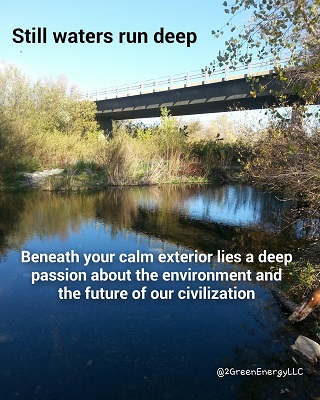From Guest Blogger Lana Hawkins: Five Key Trends That Will Shape the Future of Water

UV treatment
There is a host of emerging technologies that promise to change the patterns of water consumption, treatment, and disposal. For instance, ultraviolet (UV) disinfection and desalination have entered the spotlight. UV wastewater treatment is already in place in some advanced facilities, while other treatment systems operators are discouraged by the upfront costs.
Namely, the capital and budgetary restrictions impede the wider application of solutions like Industrial UV water treatment systems. Likewise, many will struggle to take advantage of desalination tech, which could make a huge difference in drought-stricken regions.
Nano filtration
There are many cheap water filtration systems, but the technology does not rest for a moment. Nanotech may change the face of our world, and water realm is no exception. Researchers have developed a nanoparticle system capable of removing chemical components like arsenic and lead from the water.
The incredible filter is composed of iron and arsenic-trapping ions that are released by nanoparticles. The purifier contains several different layers of membranes that are unparalleled in terms of blocking contaminants. This technology is still light years away from market-readiness, but in shows us the glimpse of the amazing future around the corner.
Recycled water
It is estimated that recycled water can satisfy most water demands of today and be adequately treated to ensure its impeccable quality. For now, recycled water is utilized mostly for non-potable purposes, such as landscape, irrigation, cooling of power plants, public park irrigation, etc.
Also, industrial process water is present in facilities like paper mills, toilet flushing, artificial lakes, and concrete mixing. Still, it is clear that this technology will have to be also employed to filter disease-causing organisms and other contaminants in cases where the human exposure is involved.
Green buildings
Water conservation is paramount, one of the mainstays of the global environmentalist movement. Thus, we have made strides in the area of defining water-saving and efficiency requirements for green buildings. One thing that must not be sacrificed for the sake of savings, however, is performance.
Third-party certification systems will have to acknowledge this fact, while the investments need to be made in high-efficiency plumbing fixtures, energy-efficient appliances, fixture fittings, cutting-edge HVAC, cooling towers and evaporative coolers, as well as alternate water sources such as gray water, rainwater, and the aforementioned recycled water.
Big data
Big data makes big splashes in the market. It is being implemented in a wide array of businesses with people constantly seek information about water quality, safety, scarcity, etc. As a result, data and analytics companies like WatrHub have offered up-to-date information on water and wastewater treatment, catering to a multitude of players across industry sectors.
A lot of fragmented data is already available to us, but the trick is to make sense of it all, and acquire actionable information, reports, and market intelligence. It is clear that in order to move full steam ahead, we must harness the full power of knowledge and data.
Come hell or high water
Our society depends on the reliable and constant supply of clean drinking water. Yet, one in nine people in the world live without access to it and that is just the tip of the iceberg. Water scarcity, poor sanitation, polluting wastewater, and other problems will only get bigger unless we make an effort to reconfigure the framework of the industry and residential landscape. There is no other way to preserve the future than to promote sound water practices and products and shift the prevailing way of thinking about water like an inexhaustible blessing of nature.a

It’s simple. The solution to drought and water scarcity is… More Water.
It’s time for solutions, not just on Band-Aids. Conservation & recycling are fine, and these things all help, but to continue to grow, continue to prosper, continue to have the lifestyle we want, we will need a bigger, more reliable, more sustainable source of water.
Regional scale desalination, powered by renewable solar and wind energy is such a solution. And, it’s time we got started securing our water future.
It looks as though advanced purification and desalination methods will make more water available, especially if abundant and nonpolluting energy becomes available to operate them. This may become more important depending on the effects of global warming.